Leaders must be knowledgeable in planning, operations, finance, and strategy to drive business results. The executive skill suite consists of these four areas. Strategic leaders keep an eye on what’s happening around them and look for signs of change. They also question their own and other people’s assumptions to get a complete picture before acting. Their natural curiosity drives them to seek new information to help them make decisions. Lastly, strategic leaders think quickly about possible trade-offs and long-term and short-term goals before deciding.
This article highlights the premise of business strategy, the three strategic category levels, and a five-phase process to create a strategic framework.
What is a Business Strategy?
A business strategy is a plan that shows how a business will ultimately reach its vision. It also guides the decision-making process to help the company stay financially stable in a competitive market.
A strategy includes its long-term goals, the products or services it plans to sell, the types of customers it wants to attract, and the markets it wants to serve. A strategy must take into account the business environment, structure, strengths, and weaknesses, as well as market competitors. It should also be able to handle sudden changes in the market.
In essence, a strategy shows the business’s strengths and weaknesses, guiding planning to deal with threats and opportunities in the market. A good strategy will help you make logical choices about where or how you want to invest your money. It also guides projects, makes the best use of resources, and ensures that returns are sustainable.
A strategy is like a lighthouse for the business. It acts as a north star; it serves as a guide for day-to-day decision-making and coordinates departmental activities in order to achieve the vision. Without a well-lit light, the overall business effectiveness suffers.
Every business has three management levels, each of which is in charge of a different strategy. These strategies work in tandem to help the company achieve its strategic objectives. Strategies fall under the corporate, business unit, and functional level.
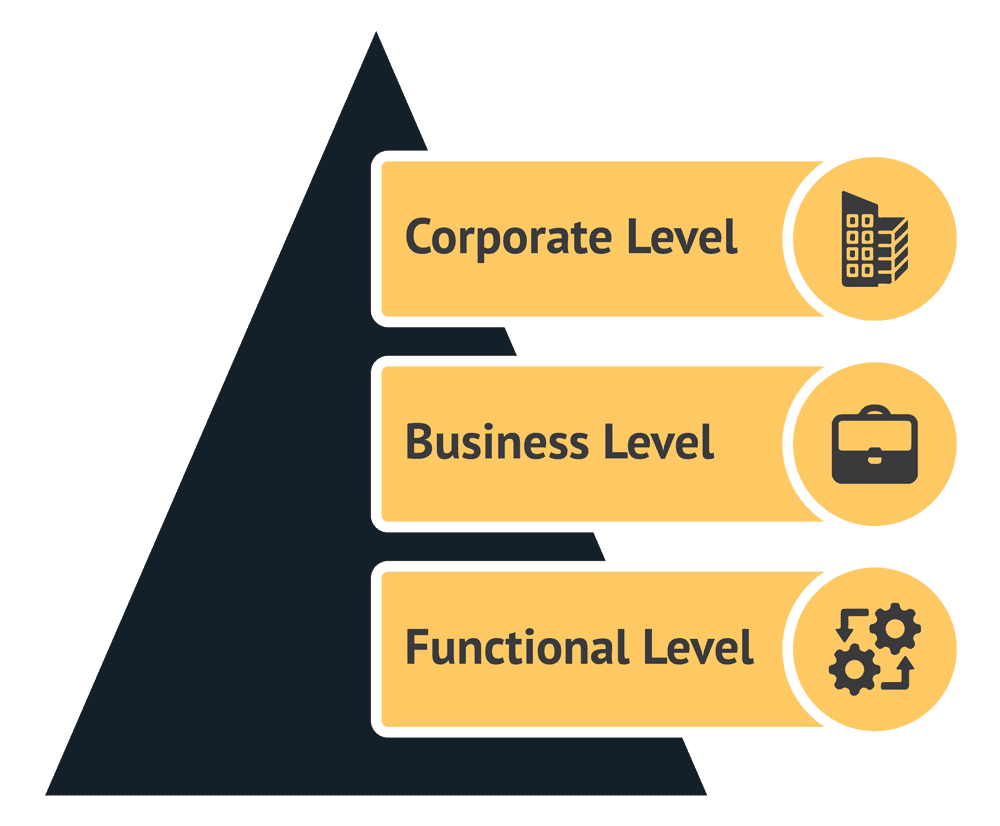

Corporate Level Strategy
To help increase profits, leaders must set clear goals and make plans for how to reach them. This means figuring out the best ways to allocate resources to serve the needs of the business and meet shareholder expectations. In essence, corporate-level strategies focus on the business’s growth potential. Whether that means switching the market your business is operating in or selling stocks to an upcoming project. The goal is to define action plans to hit specific targets to achieve long-term business objectives.
Business Level Strategy
Once leaders have selected a corporate-level strategy, managers must decide how to achieve a competitive advantage in the market. At the business level, managers translate the strategic goals into action plans outlining how they will compete and win in the market. Having a good understanding of your business and the external environment is crucial at this level. Business-level strategies aim to position the business in a way that differentiates itself from competitors.
Functional Level Strategy
Each part of a business should have a plan to reach its goals, improve its operations, and help its overall strategy. Functional level strategies use each department’s expertise to implement the overall business strategy. The best way for managers to make these strategies work is to ensure that each department’s day-to-day operations align with the strategic goals.
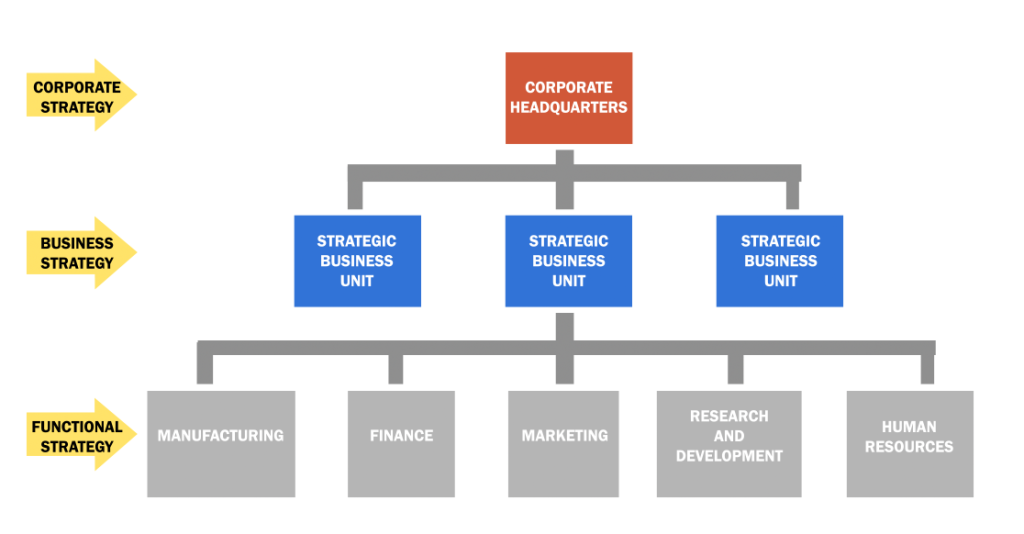

Leaders use strategies to encourage cooperation on all three levels, which are essential in achieving the vision. Strategic objectives should be seamlessly integrated into day-to-day operations. This makes sure that every department works together to reach the same goals.
5 Stages For Creating a Business Strategy
A solid strategy gives our company a clear direction, core values, and a sense of direction. It gives us a better idea of what it takes to be successful. It shows us where we’re going, where we’re going, and where we can make helpful stops along the way.
Creating a strategy includes outlining the business’s vision, goals, and how it will compete in the long run. This 5 phase strategy creation process includes: defining your vision, defining corporate-level objectives, analyzing your environment, defining your competitive advantage, and building a strategic framework.
Defining Your Vision
You’ll need to develop a vision that clearly states your strategic goals and puts your team on the right track to reach them. Your mission statement should always be a guide for both the day-to-day and long-term decisions you make. When statements aren’t aligned, they can lead to conflicting actions within the organization, hurting the business culture and performance.
When creating an effective business strategy, you must start with your business’s core values and the desired future position in the market. Defining your vision is a vital stage as it aligns the strategy with the actual needs of your target market. Your vision can help you identify your business’s products, services, target market, and customers.
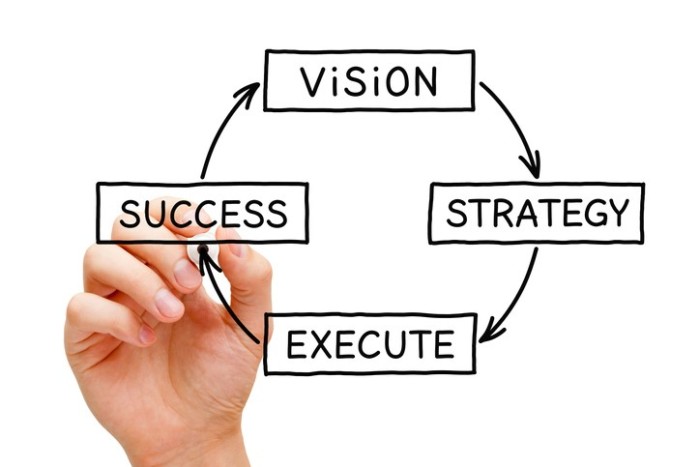

For example, Amazon’s vision statement is “to build a place where people can come to find and discover anything they might want to buy online.” Because of the vision, Amazon now has a clear picture of where they aim to be in the future.
Defining Corporate-Level Objectives
Once you’ve crafted a compelling vision for your business, the next step is to define corporate-level objectives. These objectives will help you determine how your business will compete in the market to make more money and improve its financial standing. It’s essential to keep in mind that these corporate-level goals are primarily about making your business more valuable to shareholders. In other words, how to improve overall business growth; how to generate sales and profits to increase the value of your business.
Amazon’s corporate goal is to bring people into its ecosystem and keep them there. They do this by ensuring that customers can find almost everything they need or want on their website. Amazon has various strategies to keep its customers. The best example is Amazon Prime, which offers its Prime members free delivery, instant streaming, and exclusive shopping deals.
Analyzing Your Environment
Once you have a clear vision and goals for getting there, you must look at your business’s strengths and weaknesses and the market’s opportunities and threats. A SWOT (strengths, weaknesses, opportunities, and threats) analysis can help you determine where your business stands in the market. This insight can help you realize that your business’s strengths can exploit market opportunities while addressing any weaknesses or threats that could hinder its success.
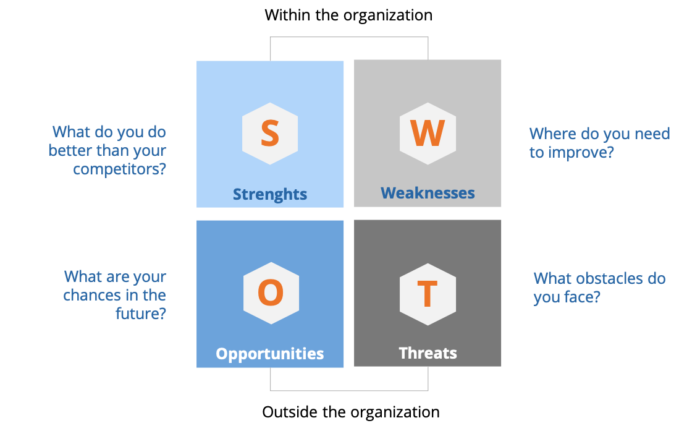

Amazon’s strengths include a strong brand name, a high value for the brand, and a focus on the customer. Their weaknesses are that their business model is easy to copy, they are losing money in some areas, and some of their products don’t work. Amazon has opportunities, such as opening more stores in developing markets to grow its business there. Based on its strengths and opportunities, Amazon can strengthen its market dominance by increasing its marketing efforts, promotional activities, and competitive advantages.
Defining Your Competitive Advantage
Once you understand your business standing in the market, it’s crucial to define how you will compete, create demand, and increase sales in the market. If your company does not find a way to differentiate itself from the competition, this will negatively impact sales. Three strategies can help you define your competitive advantage: cost, differentiation, and focus.
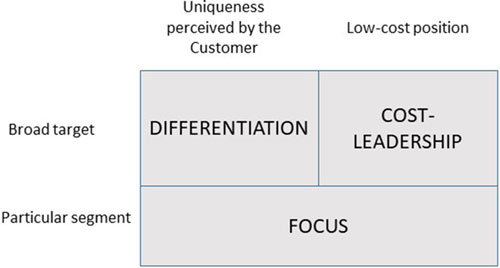

Cost Strategy
Most businesses work to increase efficiency and minimize production costs so they can offer lower prices for their products. A cost strategy attracts customers with its quality products at lower costs. Amazon tries to be the low-cost leader by setting itself apart mainly based on quality and pricing. By partially changing the costs of lowering prices over time, they generate more sales, negotiate better terms with suppliers, and create a more efficient business.
Differentiation Strategy
Some businesses offer unique products or services that have little competition. In that case, a differentiation strategy can help your offerings stand out with unique attributes. The trick is to find the pain points of your competitors’ customers and solve them. For example, Lush is a brand of cosmetics that stands out by promoting handmade and ethical shopping. Their stores offer excellent customer service and a unique shopping experience where customers can touch, try, and feel the products.
Focus Strategy
If you can’t decide between low cost and differentiation, you can always combine the two to form a hybrid strategy. A focus strategy dominates a small piece of the market, or a niche, by providing products or services uniquely tailored to their needs. Breezes Resorts is one of the best practical examples of a focused strategy. The company only works with couples who don’t have kids. The company has seven tropical resorts, and it promises that there won’t be any kids or noise there.
Building a Strategic Framework
Once you’ve defined a compelling vision, corporate-level objectives, a SWOT analysis, and a competitive advantage strategy, you can combine them to create a business strategy. This stage focuses on developing lower-level strategies within each function that will contribute to the overall strategic framework. It ensures the business plan works because it considers each department’s vision and aligns them with the goals at the corporate level. Business strategies are successful when they lead to better performance and growth in the market or revenue. Key Performance Indicators (KPIs) measure how well the strategic plan works and make adjustments if necessary.


Conclusion
Strategic leaders constantly keep their eye on the business and its external world. Before making a choice, they question assumptions and look for new information to get a complete picture of the problem. These leaders always think about the long-term and short-term goals of the company when making decisions. A strategy outlines a business’s long-term strategic goals, the products or services it plans to offer, and the target customer and market it will target.
Corporate, business and functional strategies help turn strategic goals into steps that move the vision forward. Strategic leaders know how to motivate their teams by painting a compelling picture of the future and getting people from different departments to work together toward a common goal. They are experts at putting different strategies in place to streamline processes, which leads to more productivity and new ideas. If your company doesn’t have strategic leaders, it won’t know where it’s going or how to get there.
Bianca Cardenas, M.S., Ph.D., is a Fellow in Executive Assessment and Consulting with Leadership Worth Following. Dr. Bianca Cardenas empowers leaders to transcend competition by helping them unlock their people's potential.






